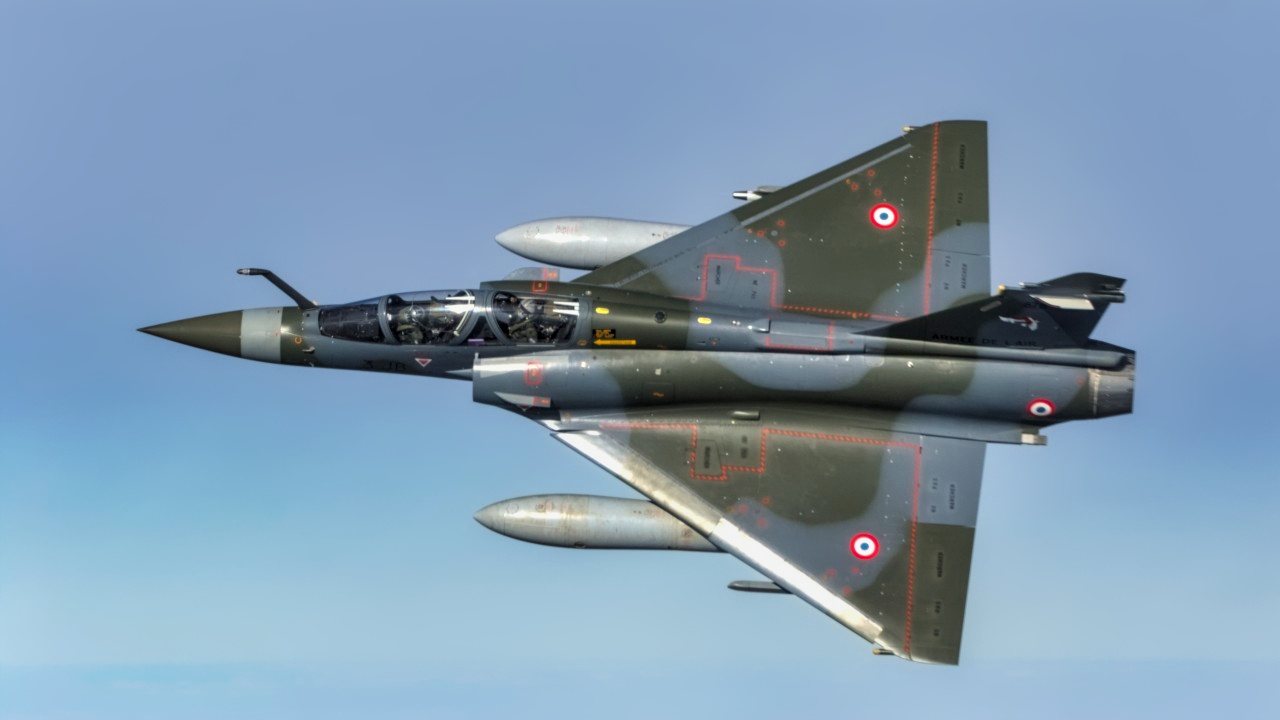Forget the F-16: France Is Giving Ukraine Mirage 2000 Fighter Jets
The Ukrainian Air Force is set to receive Dassault Mirage 2000 fighter jets from France, enhancing its ability to combat the Russian Aerospace Forces.
Summary and 6 Key Points: The Ukrainian Air Force is set to receive Dassault Mirage 2000 fighter jets from France, enhancing its ability to combat the Russian Aerospace Forces.

French President Emmanuel Macron announced the transfer, alongside European commitments to provide F-16 jets.
The Mirage 2000, a fourth-generation multirole fighter, will significantly boost Ukraine's air combat capabilities.
Additionally, France will train Ukrainian pilots and maintainers.
Macron's support for Ukraine has intensified, contrasting his earlier diplomatic stance with Russia.
France to Supply Ukraine with Dassault Mirage 2000 Fighter Jets
French military trainers will also assist Ukrainian forces, despite mild U.S. opposition due to escalation concerns.
The Ukrainian Air Force will be getting Dassault Mirage 2000 fighter jets from France. The transfer is an effort to bolster Ukraine’s ability to take on the Russian Aerospace Forces head-to-head.
The announcement comes in the wake of European commitments to transfer F-16 Fighting Falcon fighter jets to Kyiv.
French Dassault Mirage 2000 Fighter Jets for Ukraine
Last week, French President Emmanuel Macron announced that the Ukrainian Air Force would receive an unspecified number of Dassault Mirage 2000s. The French leader indicated that the transfer would take a few months to materialize. The French Air Force will also train Ukrainian pilots and maintainers so they can be ready once the fighter jets arrive.
The Dassault Mirage 2000 is a fourth-generation multirole fighter that can excel in both air superiority and ground attack missions. The aircraft can reach speeds of more than Mach 2.2 (close to 1,700 miles per hour) and has a maximum operating ceiling of 60,000 feet. It can carry a wide range of air-to-air and air-to-ground weapons systems in nine external hardpoints. Overall, the addition of the Dassault Mirage 2000 to the Ukrainian Air Force will greatly improve Kyiv’s air combat capabilities.
“You need normally between five-six months. So by the end of the year there will be pilots. The pilots will be trained in France,” said Macron.
That wasn’t the only thing the French president said about Ukraine.
French Military Trainers and Support
The French military will also deploy trainers in Ukraine to help prepare the Ukrainian military for sustained operations. The United States is mildly opposed to that proposition, because it believes the Kremlin will perceive it as an escalation.
“No, it's not about deploying European or allied people and soldiers to the front line. It's about recognizing Ukraine's sovereignty over its territory,” the French president said during a press conference last week.
Although NATO forces have been training Ukrainian troops on their home soil, they haven’t officially committed forces in Ukraine.
France and the Ukraine War: Changing Viewpoints
France has an interesting view of the Russian invasion of Ukraine.
In the weeks and days before Russia invaded, President Macron was one of the European leaders who spoke directly with Russian President Vladimir Putin.
Although Paris supported the U.S.-led international coalition to support Ukraine with both money and weapons – including Archer self-towed 155 mm artillery, SCALP-EG cruise missiles, and AMX-10RC tank killers – Macron regularly indicated that Moscow should be respected and that a negotiated peace might be the best outcome for all involved.

However, over the past several months, the French leader has changed his outlook on the conflict and has become one of the strongest and most vocal supporters of Ukraine. Indeed, in some regards, he is more supportive than even the United States.
About the Author: Harrison Kass
Stavros Atlamazoglou is a seasoned defense journalist specializing in special operations and a Hellenic Army veteran (national service with the 575th Marine Battalion and Army HQ). He holds a BA from the Johns Hopkins University and an MA from the Johns Hopkins’ School of Advanced International Studies (SAIS). His work has been featured in Business Insider, Sandboxx, and SOFREP.


